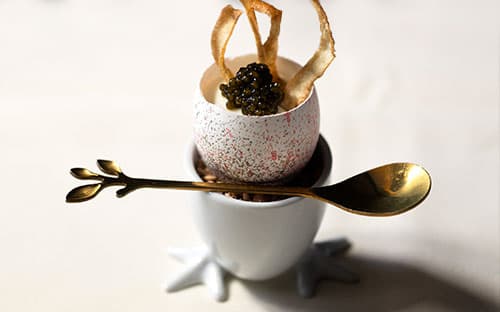
The Michelin Guide came to Quebec in May, bestowing a handful of stars on the province’s restaurants. But before it did, I slyly nabbed reservations at some top contenders. Five days, four Michelin stars and three recommended restaurants later, I learned that – Michelin or not – there’s a lot to celebrate about Quebec’s culinary scene.
1 Star: Laurie Raphaël: Let’s say you’re celebrity chef Daniel Vézina. It’s 33 years ago, and you open a restaurant with your wife Suzanne Gagnon and call it Laurie Raphaël. Then, you have a daughter, who you name Laurie, and a son, who you name Raphaël, and one day Raphaël becomes a chef who takes the reins of the family restaurant and earns a Michelin star. This isn’t the premise of a Hallmark movie – it literally just happened in Quebec City. Laurie Raphaël’s multi-course tasting menu is full of easy-to-love plot twists: Halibut ceviche with sea buckthorn and wild ginger, a grilled kale salad with miso and brown butter, and springtime lobster with salsify tortellini. After dessert, saunter over to the lounge for a nightcap and a chocolate surprise. Roll credits.
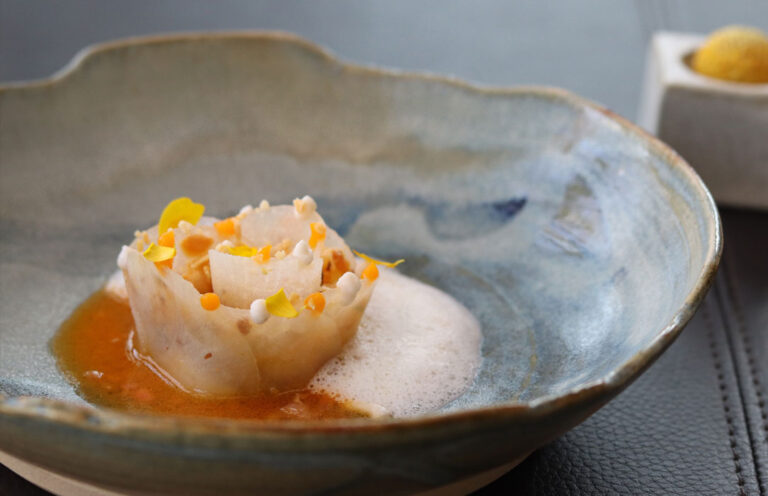
Halibut ceviche with sea buckthorn and wild ginger. Photo: Courtesy of Laurie Raphaël
1 Star: Mastard: At this neighbourhood boite in Montreal’s Little Italy, chef-owner Simon Mathys’s five-course tasting menus marry local products with a truly interesting range of mostly Old-World wines. Just like the contemporary dining room, the minimalist dishes boast a quiet confidence. Like the amuse of spice cake topped with a black garlic emulsion and a shag carpet of artisanal Louis D’Or cheese from Quebec. A dish of braised lettuce includes a cream of lettuce, a lettuce puree, and a sausage of calamari and chicken. Sauces were a throughline, some decadent, some herbaceous. Pan-fried zucchini with beef carpaccio had a miso emulsion and beef broth, while the guinea fowl boasted not two but three sauces. Crack into the large intact meringue at dessert and out comes ice cream and rhubarb. How did they do that?
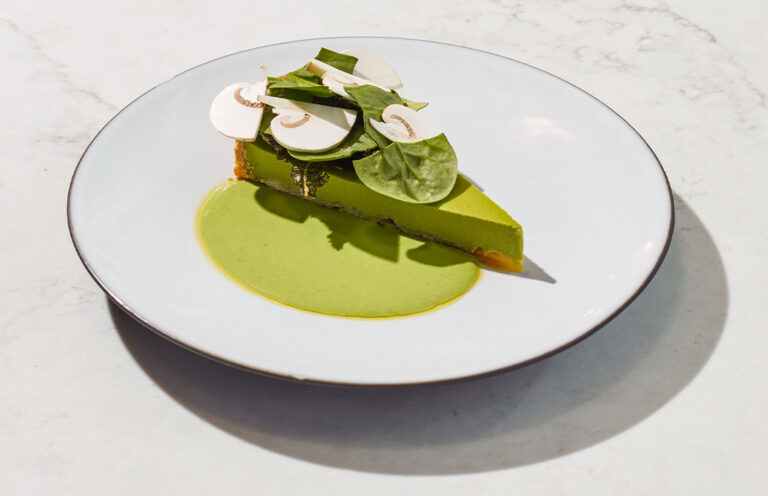
Tarte-à-la-laitue/Lettuce pie, Mastard. Photo credit : Philippe Richelet
2 Stars: Tanière³: We were texted a code just before our reservation time, arrived at an unmarked door (but for the bronze Relais & Chateaux plaque) on the circa-1600s Leber & Charest houses in Old Quebec City, and punched in the four digits. We were then ushered into the first of three ethereal vaulted spaces that played host to our moveable feast.
I don’t want to give too much of chef François-Emmanuel Nicol’s menu away, but I will say the food was astoundingly creative and delicious, and I never tire of a tableside pour – especially when it’s a rich consommé pooling around crispy-skinned duck, foie gras and morels. There was venison, lobster, sea parsley, sea urchin and perhaps a wee cookie canoe filled with sweet grass and clover cream suspended on a cloud of cotton candy. At the end of the joyous evening, we were each given a multi-page document stamped with a gold wax seal, which detailed everything we had eaten and imbibed and where the ingredients were foraged, farmed and fished – all accompanied by illustrations, maps, a manifesto and a poem. A final treasure to behold.
Recommended: Le Clan: Catalan chef Stéphane Modat embraces everything local at his restaurant, set in an historic house in Old Québec.
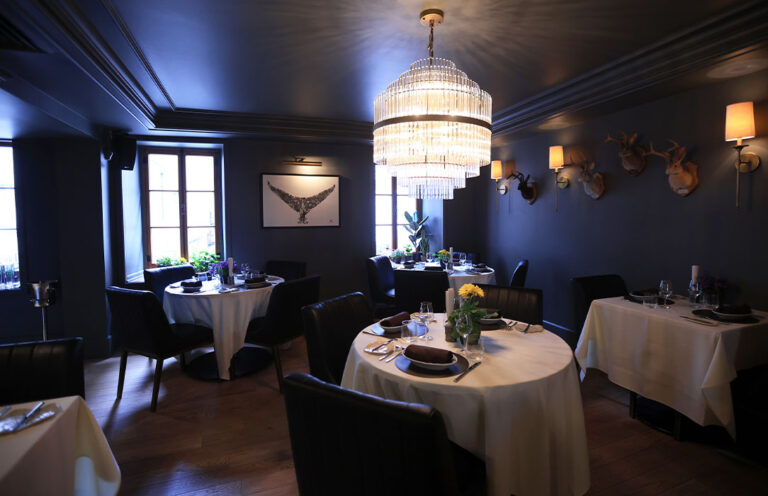
Photo: Frederic Laroche/Courtesy of LeClan
It’s springtime now so local snow crab is on the menu – sauced with a cream of arugula, smoked kombu, lily leaves, puffed buckwheat and wild garlic oil. But more often the tasting menus are inspired by meatier boreal traditions coupled with modern techniques. You pass the open kitchen upon entry then move upstairs to a room decked out in hunting and fishing trophies (Modat’s passions).
An especially satisfying dish – the chef’s homage to Mohawk culture – is smoked sturgeon with sunchoke chips, venison tataki, sea buckthorn, mustard seeds and a garlicky ajo blanco sauce. It’s a taste of his heritage, his home and his future.
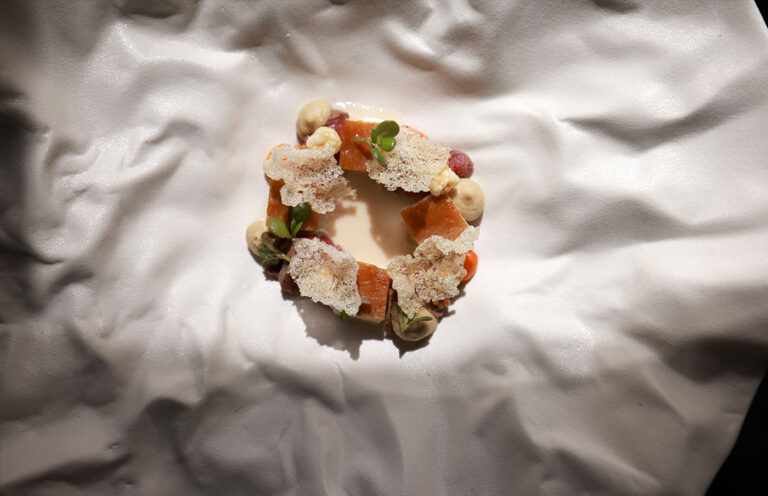
Mohawk plate, LeClan. Photo: Frederic Laroche/Courtesy of LeClan
Recommended: Le Mousso: It’s casual, it’s modernist, and it’s theatre in the round, led by chef, owner and ringmaster Antonin Mousseau-Rivard and his merry band of servers. They deliver the room of 30 guests each course at the exact same time, while the chef boisterously describes the dishes to all. The crab two ways includes the leg meat in a tiny tart with a chiffonade of the first herbs of spring, served on top of a crab shell. Eat the tart, flip the shell over and stuck to its interior is a large dollop of buttery crab liver mousse with kaffir lime and crispy buckwheat. A “surf and turf” of Quebec wagyu beef topped with a sauce poivre and a quenelle of black garlic and Acadian sturgeon caviar comes with a little bouquet of mustard flowers brushed with beef fat, and a sauce to dip it in. Chef Mousseau-Rivard is a prodigy, and this is the most fun you can have while dropping $250 for a 10-course tasting menu in Montreal.
Recommended: Toqué! In a casual yet posh room in downtown Montreal, I enjoyed a sun-dappled lunch with lovely wine pairings and service to match. I relished every first taste of spring in my dish of green and white asparagus, the sweetest Quebec strawberries and sauce gribiche.
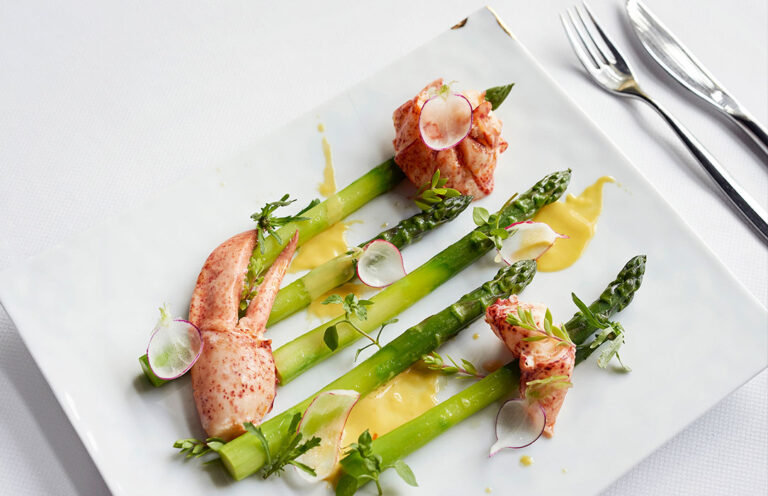
Asparagus and lobster, Toqué. Photo: Courtesy of Toqué
A nettle risotto with sweetbreads, lobster and cinnamon cap mushrooms tasted like a garden of temptation, while a honey-themed dessert incorporated no fewer than a dozen textures and temperatures. Normand Laprise, the restaurant’s chef and co-owner, is widely considered the godfather of the modern Canadian food movement. How his restaurant didn’t earn a star is one of life’s great mysteries.